#Harvard Murals
Text

Mark Rothko, Sketch for the Harvard Murals, 1961
706 notes
·
View notes
Text





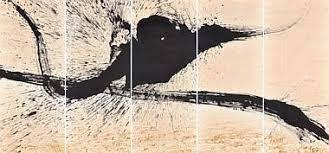

Qin Feng (b. 1961, Xinjiang, China) is a leading international ink artist and one of the foremost representatives of China's avant-garde movement. He studied mural painting at the Shandong University of Art and Design in the early 1980s. Qin moved to Berlin where he began to synthesize Western modernism and Chinese ink painting traditions. Qin founded the Museum of Contemporary Art in Beijing in 2007 and began teaching at the Central Academy of Fine Arts in the same year. In 2008, Qin became a research associate at the Fairbank Centre for Chinese Studies at Harvard University. Qin splits his works into Civilization Landscape and Desire Scenery series, which are conflict and concession between civilization and desire both existed in mankind. Civilization lost impetus without lust, and desire would corrupt if not be ushered by civilization. Qin's works attempt to extend from plane to spacial and installation space, though not through stacking and adding, but through brushstrokes to form a powerful field that embraces the viewer. If we were to compare his work with music, his "scenery" is like a symphony that intertwines human emotions, desires, and self-control, or as the Zen Buddhism saying – "Accomplishing awakening by realizing the original nature and by pointing out the human mind directly."
30 notes
·
View notes
Text

Lewis W. Rubenstein, American (Buffalo, NY 1908 - 2003 Shelburne, VT)
Rico Lebrun, American (Naples, Italy 1900 - 1964 Malibu, CA)
Title
The Hunger March 1933
Mural study
Harvard Art Museum
9 notes
·
View notes
Note
Hi! Love your blog. I really enjoy Rothko's work and I was curious about your statement that museums over-light Rothkos. My main exposure to Rothko's work is Rothko Chapel in Houston which is quite brightly lit, and I was curious - what in your opinion would be the ideal lighting for Rothko's works in general (if such a question can be answered) as well as for Rothko Chapel? Thanks so much - have a great day!
It's pretty well documented that Rothko wanted the work seen the way he saw it as he painted it. That was close up (18 inches from the painting but take into account Rothko was very nearsighted) and in low light, "Religious Twilight" Stanley Kunitz called it. There are people who attest to this environment who have very firsthand knowledge of the work and explain a feeling that the color comes alive in lower light, penetrating it, sort of night blooming.
For reasons both good and bad, museums do what they want. Rothko did not want frames on any of this paintings but you see them anyway, especially in Europe, where, ironically, the light tends to be lower in the exhibits. To make matters more complicated Rothko was not keen on his work being seen with other work, he wanted one painting alone or a group of paintings alone but that's a highly impractical thing for a lot of museums. The National Gallery In Washington DC has a Rothko room as does the Tate in England, but this is the exception, not the rule.
Some museums really do struggle to stay afloat, people don't like to walk around in darkness where it's hard to see things, practically everything in America is brightly lit, loud and ample. I think there's a desire to give the public what they want that has inevitably resulted in this practice spilling over to museums. To make matters worse, the kind of light museums use (warm or cool, LED etc) affects greatly the presentation of color. This is the reason photographs of Rothkos often swap blue for green or vice-versa.
I'm not an expert in any of this or, sadly, wealthy enough to travel and see every Rothko exhibit. But I think this problem is getting better as art museums, sort of like restaurants, have entered the modern age of forensic examinations and chemistry. New attitudes about restoration have gained a lot of ground, mostly because computers are so sophisticated they allow technology to take a larger role. It's good, I think. A lot of people care about the art and that's where it has to to start. With Rothko, luckily there are some good people working on it including members of his family, who are steering things in the right direction as much as they can. We're going to see some really good reproductions coming out and I think this is due to that kind of care.
As for the Chapel, I have been but not since the renovation. I am told it's very good but will have to experience it myself.
Matters like this are sort of art projects themselves. As we saw in the Harvard Mural restoration, a lot of trouble was gone to to save these damaged works without doing what the used to do for centuries to art which was basically repainting it.
as i have veered off into more than one subject, I'll leave you with an anecdote. I post these on my instagram but have not done it here as I have not been sure of my old guard Tumblr followers wanted the addition of Rothko quotes with the paintings (perhaps they can tell me)
"(Rothko) wanted a dim light for his show at Janis. Janis thought the lighting "made the gallery so dismal, but he wanted some kind of mystery attached to his painting." When Philip Guston accompanied Rothko to one of his shows at the Janis, Rothko turned off half the lights in the gallery."
70 notes
·
View notes
Text
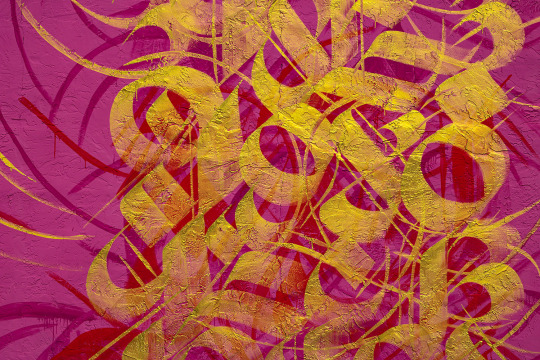

"DEVI"
by Imagine
The meditative work of Nepali artist Sneha Shrestha, aka Imagine, "meshes the aesthetics of Sanskrit scriptures with graffiti influences." A passionate supporter of Asian art Imagine established Nepal's first Children's Art Museum, and at Harvard where she earned a Master's Degree she works as a program manager for the South Asia Institute. In St Pete, Florida in 2022 for the annual Shine Mural Festival Imagine dedicated this piece to her mother. Devi is her mother's middle name and also means goddess in Sanskrit. For this work Imagine stacked the names of her last three immigration forms, grateful to have inherited a share of the fierce energy of her mother that helped her get through the arduous process.
LOCATION: 240 Dr MLK Jr St N, St Petersburg, FL 33705
IG: @imagine876 @shineonstpete
#art#streetart#mural#SnehaShrestha#Imagine876#ShineOnStPete#StPeteMurals#StPeteStreetArt#graffiti#calligraphy#Sanskrit
17 notes
·
View notes
Text
Art in the Stations: Financial District

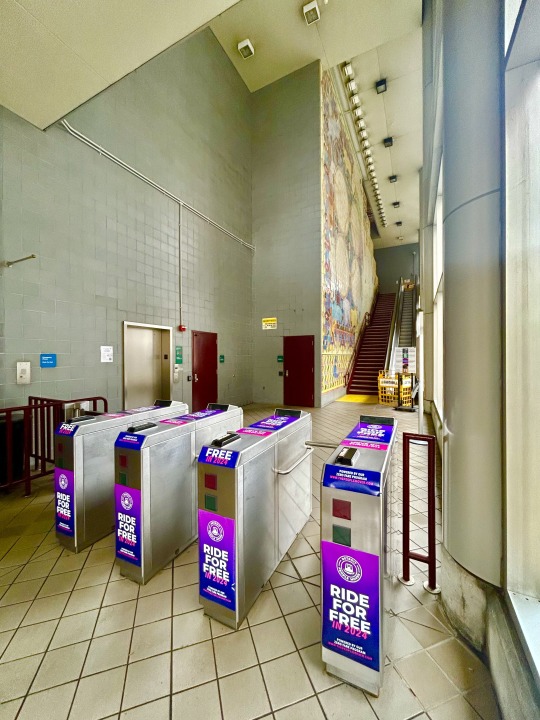

The Financial District is home to some of Detroit's most beautiful art-deco skyscrapers, including The Guardian, Buhl, Ford, and Penobscot Buildings. The People Mover Station features Aztec and Byzantine designs, integrating both the neighborhood's architecture and history.
The large hand-painted mural "'D' For Detroit" by Joyce Kozloff includes mythical animals, peacocks, the bull and bear of the Stock Exchange, and an illuminated "D." The mural design is inspired by the Guardian Building, the Fisher Building, and Diego Rivera's Detroit Industry Murals at the Detroit Institute of Arts.
Kozloff created and hand-painted each tile herself in Kohler, Wisconsin at the John Michael Kohler Art Center. She has also worked on several other public art installations around the country, including Harvard Square and the 86th and Central Park Street Subway Station.
The peacocks were inspired by James McNeill Whistler's paintings, who had designed "The Peacock Room" at 49 Prince's Gate in London, owned by British shipping magnate Frederick Richards Leyland. The room was preserved in 1904 by Charles Lang Freer, who installed it in his home at 71 E. Ferry Avenue. The original wall is now on display at the Smithsonian in Washington, DC.









#artinthestations#detroitpeoplemover#financialdistrict#publicart#detroit#downtowndetroit#financialdistrictdetroit#freerhome#charleslangfreer#thepeacockroom
4 notes
·
View notes
Video
Pagan gods (Moloch) par Boston Public Library
Via Flickr :
File name: A1-Pagan_Gods-Moloch Title: Pagan gods (Moloch) Creator/Contributor: Sargent, John Singer, 1856-1925 (artist); Straus Center for Conservation and Technical Studies (sponsor) Date created: 2003 Physical description: 1 transparency : color ; 4 x 5 in. Summary: Mural depicting the Pagan God Moloch, who was known as the God of materialism and child sacrifice. Genre: Film transparencies; Paintings Subject: Murals; Religion; Gods; Moloch (Semitic deity) Notes: Title and other information from: John Singer Sargent's Triumph of religion at the Boston Public Library : creation and restoration / edited by Narayan Khandekar, Gianfranco Pocobene, Kate Smith. Cambridge, Mass. : Harvard Art Museum, 2009.; This mural was installed in the Boston Public Library in 1895. It is located on the west side of the north ceiling vault.; Photograph by William Kipp for the Straus Center for Conservation and Technical Studies. Location: Sargent Gallery, Boston Public Library Rights: Rights status not evaluated
7 notes
·
View notes
Text
"FUTURE FORWARD PROJECT"
This is a Video Documentation of ongoing collaborative Educational project with Spoke context from 2021-2022.
"FUTURE FORWARD" is a one of some my most proud project I got to involved thanks to Elif Ucan from Spoke context.
We have been creating public murals, mural, and digital art workshop since 2015.
and "FUTURE FORWARD" is a project we have been working on since 2021.

here is a quote about the project from SPOKE CONTEXT SITE:
"Future Forward: Mit Public Art in die Zukunft is an educational public art initiative with the aim of providing students at middle schools across the state of Bavaria, Germany with an opportunity to gain and practice critical competencies needed to thrive in our world. Future Forward serves as a potent, creativity-based learning environment capable of imparting transformative competencies, meaning the skills and habits of mind, needed to navigate and shape our uncertain and rapidly shifting social, environmental, political and economic ecosystem.
Future Forward affords interactive collaborations between youth and japanese artist, Hiroyasu Tsuri, to create public facing art experiences that enable participants to tangibly enage with global community through digital and analog art making. Our learning interventions are designed to equip young learners with skills and experiences addressing global challenges, while offering an assets-focused premise to exercise autonomous action and real time problem solving.


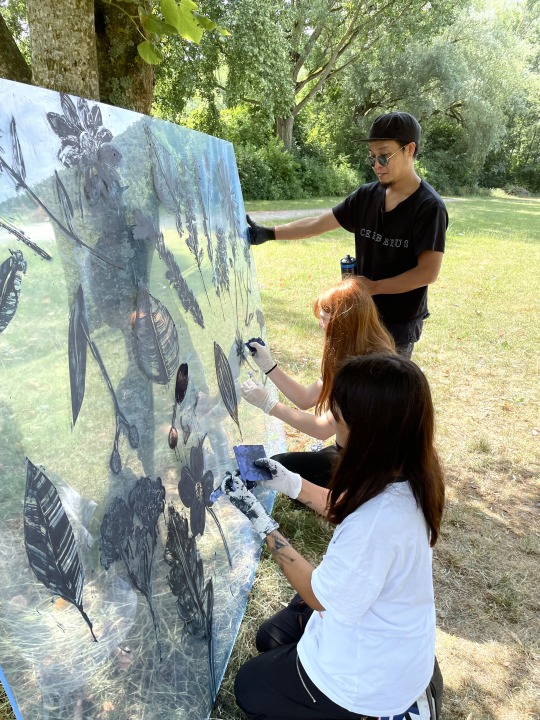
Future Forward’s multi-faceted, interdisciplinary learning framework enhances young learners’ processes and tools for life beyond school, while supporting a better understanding of themselves, their peers and community. Due to its large-scale and public-facing nature, Future Forward initiatives are inherently civic and offer an outlet for civic voice. To strengthen civic inquiry and engagement throughout interventions, Future Forward employs the Art as Civic Commons learning framework developed by researchers at Harvard Graduate School of Education’s Project Zero to further investigate civic themes and avenues of action.
Future Forward is sponsored by the Cultural Fund for Education, the Ministry of Culture and Education of Bavaria and the Region of Upper Bavaria. In partnership with the Catholic University of Eichstätt-Ingolstadt and Professor Rainer Wenrich, Chair of Arts Education and Art Didactics, Future Forward is accompanied by a scientific research study to investigate learning outcomes and efficacy of interventions.
the Video was edited by my good friend Naoto Sakamoto.
2 notes
·
View notes
Photo
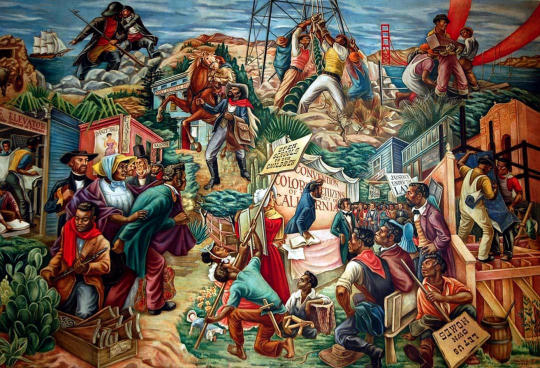
MWW Artwork of the Day (2/10/23)
Hale Woodruff (African-American, 1900-1980)
The Negro in California History: Settlement and Development (1949)
Mural
Golden State Mutual Life Building, Los Angeles CA
In 1949, Golden State Mutual Life commissioned two major Harlem Renaissance painters, Charles Alston and Hale Woodruff, to paint a pair of murals for their Paul Williams-designed building at Western and Adams. They were titled "The Negro in California History," with Alston doing "Colonization and Exploitation" and Woodruff's "Settlement and Development" (reproduced here). Born in Cairo, Illinois and educated at Harvard, Woodruff was an African-American artist best known for his murals, paintings, and prints.
More of this artist's work appears in this MWW exhibit/gallery:
https://www.facebook.com/media/set/?set=a.343798162392226&type=3
10 notes
·
View notes
Text



Omise’eke Natasha Tinsley on Miss Marsha P. Johnson, transmisogynoir, and Black femme ornamentation & excess
from The Color Pynk: Black Femme Art for Survival (2022). image description below the cut.
image description: three screenshots of an ebook section titled “Star Pynk” in pink text. the excerpt reads:
Triangles, double moons, handkerchiefs, pansies, roses while we’re still here: of course, of course, so many shades of pink sing queerness without saying a word. Writing this book, I spent uncounted hours gazing at very, very queer pink pantsuits, pink eye makeup, pink ribbons, pink altars, pink survival gear, even pink HuCows. But the sources of femme pinkness that drew me in deepest... that I returned to again and again like a river... were the gowns, flowers, and aura of Stonewall veteran, activist, artist, model, and performer Marsha P. Johnson. I fell into rose-colored time warps watching her on Tourmaline’s Vimeo, Randolfe Wicker’s YouTube, and Michael Kasino’s love letter of a documentary, Pay It No Mind.
On February 14, 2019, I brought art supplies to my Femme Theory class at Harvard so students could make valentines for Miss Marsha and leave them in public places. I entreated my amazing Harvard colleague Robert Reid-Pharr, who knew Marsha in the 1980s, to tell me stories. Gifted with a chance to moderate a conversation with CeCe McDonald and Elle Moxley in February 2021, I asked these brilliant women to talk about their love for the Queen Mother. Marsha P(ay It No Mind) Johnson is the color pynk to me—the femmebodiment of all its queer nuances, loving generosity, and improbable joys.
One of Mother Marsha’s most circulated images— the header on the Marsha P. Johnson Institute website and the model for murals in Dallas, Denver, Portland, and Jersey City—shows her smiling radiantly in an off-the-shoulder fuchsia taffeta dress, haloed by a crown of roses, carnations, daisies, peonies, and baby’s breath. In one of my favorite images she poses at Gay Pride in a shimmering, rose-gold gown, crowned with a wide-open wreath of pink and red flowers and adorned with a lav- ender sash embossed stonewall. In these and other images that live on my screen, Miss Marsha is always fabulously, fantastically ornamented to the hilt in ways that look like love.
Let me be more specific, though: Mother Marsha is gorgeously or- namented in ways that look like Black love. Everyone knows Black people love shiny things, right? That “aesthetical Negroes [are] content to waste money on extravagance, ornament, and shine.” That “things that bling, shine, or shimmer, that emit light are especially privileged” in the “everyday aspirational practices of black urban communities, who make do and more with what they have, creating prestige through the resources at hand,” as art historian Krista Thompson elucidates.
In his influential, unabashedly racist 1908 treatise “Ornament and Crime,” Viennese archi- tect Adolf Loos was indulgent of so-called Kaffirs’ love of the ornamental since, unlike “modern man,” they “have no other way of attaining the high points of their existence.” Twenty-first-century racists are less tolerant of African American accumulation of “bling, shine, and shimmer.” Noting derision of Hurricane Katrina survivors’ jewelry, Humvees, Louis Vuitton bags, and flat-screen TVs, Lisa Marie Cacho observes, “Poor African Americans are not only represented as unentitled to ‘luxuries’; they are also denied the power to decide what constitutes a ‘luxury’ and the power to define what they need and what they can live without.”
Not (only) luxuries, ornaments can be lifesaving shields more resistant than levees. “The ostentatious display of things might be interpreted as a protective means. We might understand the use of material goods and the production of blinding light as a shield or apotropaic, simultaneously reflecting and deflecting the deidealizing gaze on black subjects,” Thompson offers. “The beauty of black ordinary, the beauty that resides in and animates the determination to live free, the beauty that propels the experiments in living otherwise,” Hartman states in no uncertain terms, “is not a luxury; rather it is a way of creating possibility in the space of enclosure, a radical art of subsistence, an embrace of our terribleness, a transfiguration of the given. It is a will to adorn, a proclivity for the baroque, and the love of too much.”
For Black trans women, transfeminist scholar Eve Lorane Brown describes, the beauty of black ordinary—the “extravagance, ornament, and shine” of hormone therapy, hair extensions, contouring kits, or other everyday accessories of black femme-ininity—saves lives in more immediate ways. White trans women forgo makeup, breasts, or shaved legs and walk through her majority-Black Oakland neighborhood unharassed, she notices, benefitting from residents’ knowledge that interfering with any white person risks police intervention. The same isn’t true for Black trans women.
“No matter how unclockable” a trans femme of color might be, “no matter how well she could blend in, she still carried that seed of fear about being found out . . . fetishized, ridiculed, rejected, or attacked,” Janet Mock writes. “We don’t have to search for too long to watch footage of a girl being attacked on public transit or in the restroom, or read a story about the killing of yet another black or Latina woman.” Femme tech— manicures, wigs, foundation makeup, dresses, waist trainers, handbags, hormone therapies, plastic surgeries—are “‘luxuries’ [that] may be regarded as meeting basic physiological and safety needs for African American trans women,” Brown concludes. Diving into ornament as a daily practice of beauty and safety, Treva Ellison remarks, Black trans femmes engage “the sartorial, the expressive, and the performed” with a view to “reworking and repurposing the signs, symbols, and accoutrements of Western modernity” in ways that guard against “Black femme subjection, abuse, and premature death.”
But Marsha’s pink, shiny, frilly, plastic, floral femme tech wasn’t curated to blend seamlessly with—well, anything. She stood out, always. Queen Mother wasn’t shy to walk through town half en déshabillé: “She’d be coming up Christopher Street with the rolled-down stockings, fuzzy slippers, her wig in beer-can rollers: ‘Hello, everybody! What a wo-o-onderful morning!’” Sasha McCaffrey laughs. When fully dressed— gloriously “over the top with the jewelry, flowers in her hair, very creative looking, very commanding of attention,” performer Ron Jones recalls— Marsha embodied the Black aesthetic Hartman lyricizes as the “tendency to excess, the too much, the love of the baroque; the double descriptive: down-low, Negro-brown, more great and more better; the frenzy and passion; the shine and fabulousness of ghetto girls.”
Like her spiritual daughter Tourmaline, Marsha dressed as her “fullest and freest self in the most public of places”: “I remember seeing Marsha walk down the street in a miniskirt that she had made with nothing on underneath and it was clearly see-through. Clearly!” Rick Shupper emphasizes. “She wasn’t the kind of queen you questioned her drag,” Martin Boyce explains thoughtfully. “Because she had very little. And, you know, she wasn’t a well-dressed, coordinated kind of queen. She put on what was available and what, you know, fulfilled her idea of being a woman to some extent. It was a very, very natural look—and all her own.”
end image description.
#femme#marsha p johnson#Black femme#queer femme#trans femme#queer history#Black history#transfeminism#transfem femme#Omise’eke Natasha Tinsley#the color pynk#quotes#mac’s bookshelf#racism#antiblackness#transmisogynoir#everything goes back to femme
1 note
·
View note
Text
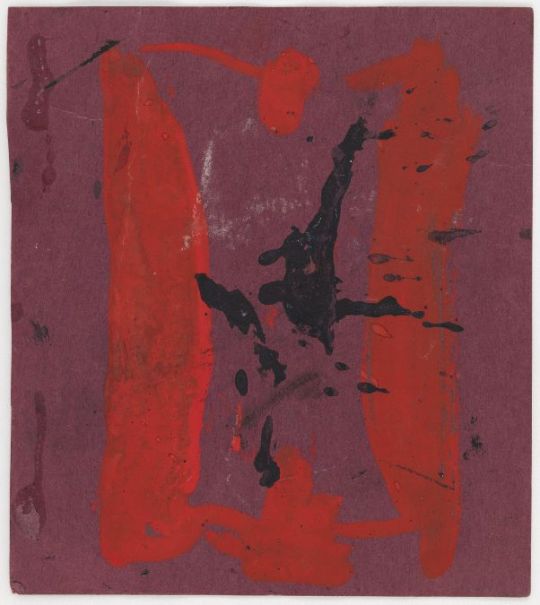
Untitled (Study for Harvard Murals) (1961)
Artist: Mark Rothko
1 note
·
View note
Text
The East Coast Premiere of Sharon Stone's Paintings - Sharon Stone: Welcome To My Garden

The C. Parker Gallery in Greenwich, Connecticut presents the East Coast premiere of Sharon Stone’s paintings with the new exhibition Sharon Stone: Welcome To My Garden, on view October 12 through December 10. “We are honored to present the highly anticipated East Coast debut of Sharon Stone’s powerful art, for our tenth anniversary season,” says Tiffany Benincasa, C. Parker Gallery’s owner and curator. “This new exhibition offers a never-before-seen panorama into Sharon Stone’s creative prowess. The artist invites viewers on a journey through the vibrant landscapes of her imagination, reflecting her inner world. A testament to Stone’s profound talents,” adds Benincasa. The gallery is located at 409 Greenwich Avenue, just a 40-minute train ride from New York City.
The gallery show features 19 paintings by Stone, and is the first time her artworks are exhibited outside of Los Angeles. Her art is praised by collectors and art world luminaries, including Jerry Saltz (Senior Art Critic for New York Magazine and winner of the Pulitzer Prize for Criticism). Stone’s celebrated slide-shows of her paintings are taking Instagram by storm. “I created these works to understand the essence of pure creativity that comes from heartfelt truth, to let go of the noise, the judgements, and the pollution of our societal pulls,” says Sharon Stone. Her immense talents and acute powers of observation blossomed onto the painted medium. Stone’s ability to observe and interpret human behavior, and her capacity to turn human frailties into sources of strength, shine through in ways that are combative, conquering, and victorious. Her connection to nature is always visually present. “Color becomes a wavelength for me,” says Stone. “Being a colorist moves the directions of my paintings. Color speaks to me.”
Stone has been painting her entire life. In her early years, her Aunt Vonne had a Master’s degree in painting and would create murals across the walls of the home where she lived as a child. Stone studied painting in college, and her artmaking became her laser-focus during the pandemic when she entered a new creative portal. This period of planetary crisis transported Stone to open up new artistic channels, transferring her lifelong creative instincts onto the canvas. Since then, she paints every day, four to 17 hours per day. Stone is internationally recognized as a global cultural leader, her many honors include: the Women Making History Award from the National Women’s History Museum; the Einstein Spirit of Achievement Award; the Nobel Peace Summit Award Laureate; the Golden Globe Award; a Primetime Emmy Award; an Academy Award Nomination; she was named a Commander of the Order of Arts and Letters in France; the 2023 Courage Award; the Harvard Humanitarian Award; and the Human Rights Campaign Humanitarian Award, among her many accolades.
C. Parker Gallery is a full-service art gallery and consultancy celebrating its tenth year in Greenwich, Connecticut. Representing an extensive collection of works by traditional and contemporary artists, the Gallery is a recipient of the Best of Greenwich Award and Best of the Gold Coast Award. The gallery’s inventory features more than 1,800 works from over 70 artists representing original paintings, prints, sculpture, and collectibles.
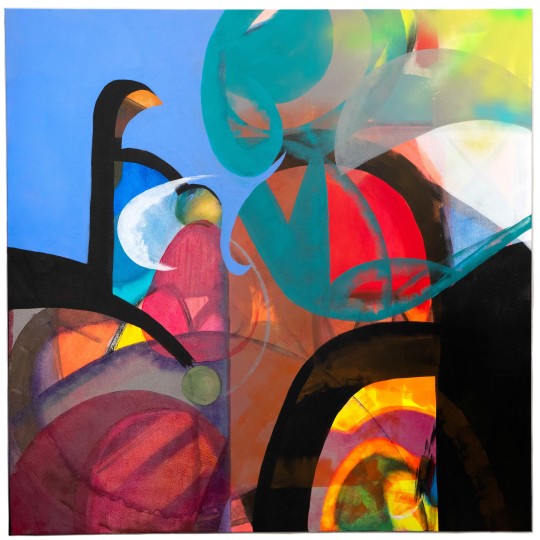
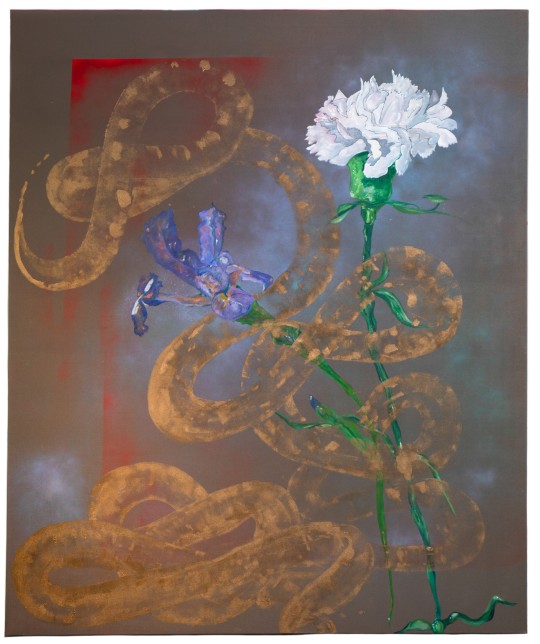




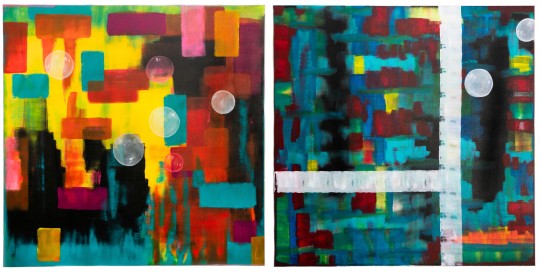






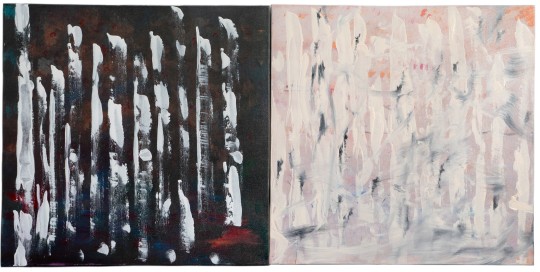
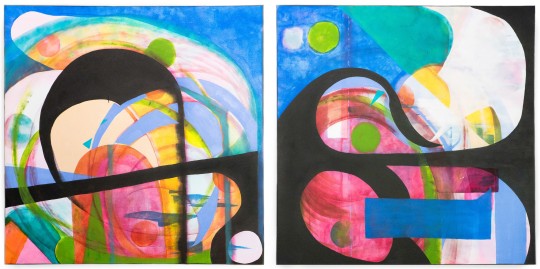


https://vimeo.com/878010744
0 notes
Text
Investigative Study Intro
5000 word essay
Choose a subject you are passionate or curious about
Want to hear your voice in essay
Primary and secondary research-interviews, surveys, your own experiments, exhibitions, books, movies and podcasts
Group tutorials and 121 sign ups

Final Submission:
1: Essay-1 copy submitted on Wiseflow:
Should be in academic format
Title page (name, course details, essay title)
Font 10 point Arial
Double spaced
List of figure
Reference list in Harvard style
2: Designed Cover and Synopsis:
PDF cover that expresses the theme of your essay, with its title and your name
PDF of your synopsis of study typographically set as an internal page
Do's and Don't's:
Under no circumstance use words or ideas of others without a proper citation
Use Harvard referencing
Reference as you go along
Quotes should be pretty short, under 40 words unless vital
Describe the images and visual info in detail
You will need to explain how your witten research is related to your viscom work. A sentence or two can cover the LO of how your research relates to your practice. Are you interested in social innovation, type of sustainability etc
Making a padlet/miro/mural boards will help connect the dots
First person narrative can be really strong
For Friday:

Notes for oral presentation:
Over the summer I had been reading Unwell Women By Elinor Cleghorn, a book about the history of women and medicine. I felt inspired by the stories to look into women's health campaigns and how the visual communication of this has impacted and reflected women's position in society and how, by extension, it has impacted their health. This asserts visual communication as being more than just pretty pictures, but a means for societal change and sadly, continuous reinforcements of patriarchy. Although the book does address western campaigns, I wanted more examples and so looked to All-American Ads by Ed. Jim Heimann from the 40s to 90s. It was interesting to observe how the quantity and openness of advertisements for reproductive health upped steadily with each decade.
My next steps are to look into feminist, marketing and media theories to link into the discussion of the visual language of the campaigns. I studied media at A-Level, but my memory fails me in regards to what theories and language was used to study advertisements, I recall semiotics but that is all, so advice on this would be greatly beneficial to me.
3 keywords:
Feminism, Media, Medicine
0 notes
Text
References
Achats, T. (2021). Comment se passe un test chez Test Achats? photograph. Retrieved June 2, 2023, from https://www.test-achats.be/info/how-we-test.
Barguzin. (2015, June 23). Draw a toast (wicked problem solving). Medium. https://medium.com/@torbjorn/draw-a-toast-wicked-problem-solving-ddce2d5fb071
Brwon, T., & Katz, B. (2019). [Course Reading] The New BluePrint. Fortune, 179(3), 92-95.
Bureau, A. (2019). Attendance at selected cultural venues and events, Australia, 2017-18 financial year. Australian Bureau of Statistics. https://www.abs.gov.au/statistics/people/people-and-communities/attendance-selected-cultural-venues-and-events-australia/2017-18
City , L. M. (Ed.). (n.d.). Youth strategy. Lake Macquarie City Council. https://www.lakemac.com.au/Our-Council/City-strategies-plans-and-reporting/Youth-Strategy#:~:text=Our%20Youth%20Strategy%202020%2D2023,diverse%20population%20of%20young%20people.
Dam, R. F., & Siang, T. Y. (2023, June 8). [Course Reading] Stage 4 in the design thinking process: Prototype. The Interaction Design Foundation. https://www.interaction-design.org/literature/article/stage-4-in-the-design-thinking-process-prototype
Design Thinking, I. (n.d.). [Course Reading] IDEO design thinking. IDEO. https://designthinking.ideo.com/
Draw, U. (2021). What is design thinking? photograph. Retrieved June 2, 2023, from https://bootcamp.uxdesign.cc/beginners-guide-to-design-thinking-afcf18dce039#:~:text=It%27s%20a%20very%20successful%20way,ideate%2C%20prototype%2C%20and%20test.
Eby, K. (2019). All about the iterative design process. Smartsheet. https://www.smartsheet.com/iterative-process-guide#:~:text=The%20iterative%20process%20gives%20you,identify%20detailed%20features%20and%20functions.
Esposito, E. (2018). [Course Reading] 4 types of research methods all designers should know. Inside Design Blog. https://www.invisionapp.com/inside-design/research-methods-designers/
Foundation, I. D. (2021, June 15). What is empathize?. The Interaction Design Foundation. https://www.interaction-design.org/literature/topics/empathize#:~:text=Empathize%20is%20the%20first%20stage,%27%20experiences%2C%20motivations%20and%20problems.
Foundation, I. D. (2022, July 12). [Course Reading] What is design thinking?. The Interaction Design Foundation. https://www.interaction-design.org/literature/topics/design-thinking
Goals, S. D. (Ed.). (n.d.). The Sustainable Development Agenda - United Nations Sustainable Development. United Nations. https://www.un.org/sustainabledevelopment/development-agenda/
Hambeukers, D. (2019, January 29). [Course Reading] Design thinking and learning. Medium. https://medium.com/design-leadership-notebook/design-thinking-and-learning-fefd64f9bd1c
Images, G. (Ed.). (2020). iStock by Getty Images. photograph. Retrieved June 2, 2023, from https://www.istockphoto.com/vector/two-human-heads-silhouette-therapist-and-patient-psycho-therapy-concept-gm1282008472-379873004.
Kitch, B. (2023, May 19). How to identify pain points in the user experience [+ templates]: Mural. RSS. https://www.mural.co/blog/identify-user-pain-points
Lake Macquarie, M. of A. and C. (n.d.). Museum of Art and Culture Lake Macquarie. photograph. Retrieved June 2, 2023, from https://mac.lakemac.com.au/Home.
Liedtka, J. (2023, February 24). [Course Reading] Why design thinking works. Harvard Business Review. https://hbr.org/2018/09/why-design-thinking-works
Matthews, B. (n.d.). [Lecture Slides] UON_DESN2002_2023_WEEK2_TUTES. Google Slides. https://docs.google.com/presentation/d/16CmgJ6V6PBSTJnND0u38YLWs1yd5QUUC2hXGjQp59ls/edit#slide=id.g77e886bdc6_0_0
NYDAM, D. K. (2022). The wicked problem in general practice. photograph. Retrieved June 2, 2023, from https://www.medicalrepublic.com.au/the-wicked-problem-in-general-practice/72218.
Org, I. (Ed.). (n.d.). Integrate Feedback and Iterate. Design kit. https://www.designkit.org/methods/integrate-feedback-and-iterate.html
Pikover, J. (n.d.). The Value of Design Thinking in Business. photograph. Retrieved June 2, 2023, from https://www.toptal.com/designers/product-design/design-thinking-business-value.
Pin, U. (n.d.). Ideation in Design Thinking: Importance of Approach. photograph. Retrieved June 2, 2023, from https://www.uxpin.com/studio/blog/design-thinking-ideation/.
Pin, U. (2021). The UX/UI designer’s guide to user-centered design. photograph. Retrieved June 2, 2023, from https://www.uxpin.com/studio/blog/user-centered-design/.
Shioshvili, V. (2007). https://www.flickr.com/photos/vshioshvili/1599361851. photograph. Retrieved June 2, 2023, from https://www.flickr.com/photos/vshioshvili/1599361851.
Solomon, A. (2012, September 23). [Course Reading] Design thinking for social good: An interview with David Kelley. Boing Boing. https://boingboing.net/2012/09/22/design-thinking-for-social-goo.html
Standford, I. of D. (Ed.). (n.d.). An introduction to design thinking process guide - stanford university. An Introduction to Design Thinking PROCESS GUIDE. https://www.web.stanford.edu/~mshanks/MichaelShanks/files/509554.pdf
Tomorrow , C. (n.d.). Museums and the Sustainable Development Goals - WordPress.com. Museums and the Sustainable Development Goals. https://curatingtomorrow236646048.files.wordpress.com/2019/12/museums-and-the-sustainable-development-goals-2019.pdf
Vawda, Z. (2020). Rose, Thorn, Bud. photograph. Retrieved June 2, 2023, from https://www.linkedin.com/pulse/rose-thorn-bud-zaid-vawda.
Wahl, D. C. (2019, July 24). [Course Reading] Facing complexity: Wicked design problems. Medium. https://medium.com/age-of-awareness/facing-complexity-wicked-design-problems-ee8c71618966
Wujec, T. (2013). Got a wicked problem? First, tell me how you make toast. Tom Wujec: Got a wicked problem? First, tell me how you make toast | TED Talk. https://www.ted.com/talks/tom_wujec_got_a_wicked_problem_first_tell_me_how_you_make_toast?language=en
Zote, J. (2023). How to define and reach your target audience on social media. photograph. Retrieved June 2, 2023, from https://sproutsocial.com/insights/target-audience/.
0 notes
Text
June 1, 2023 Palm Tree mural by Taylor Bos near Harvard and Stone in East Hollywood, Los Angeles, CA
June 1, 2023 Palm Tree mural by Taylor Bos by Harvard and Stone in East Hollywood, Los Angeles, CA #mural #streetart #taylorbos #palmtrees #easthollywood #losangeles #christyborgman #lawomanphoto #onthisday
Photo by Christy Borgman
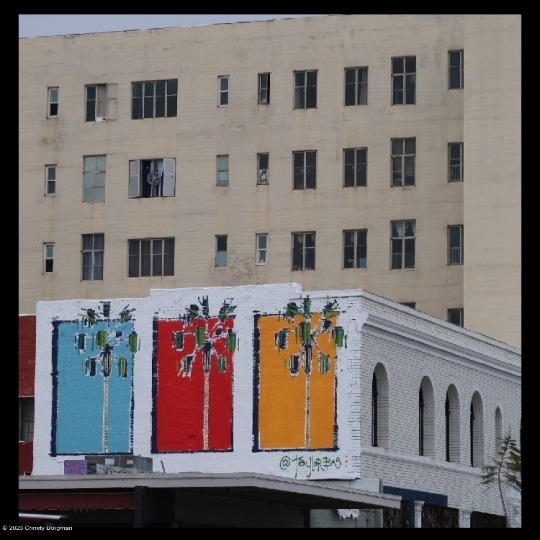
View On WordPress
0 notes
Text

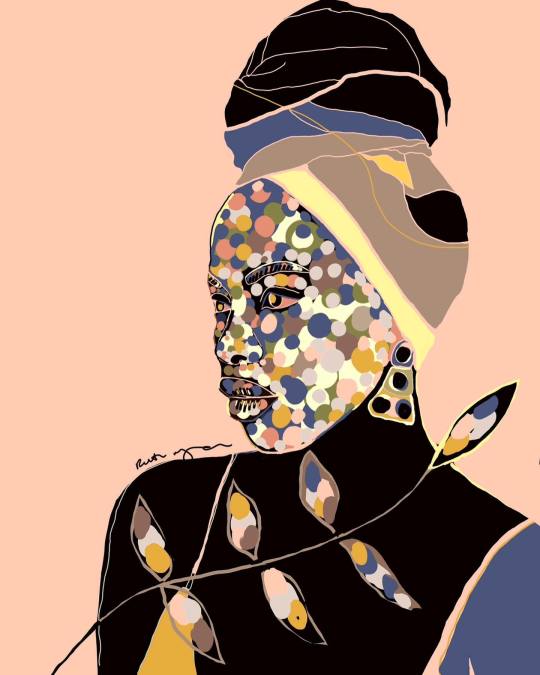
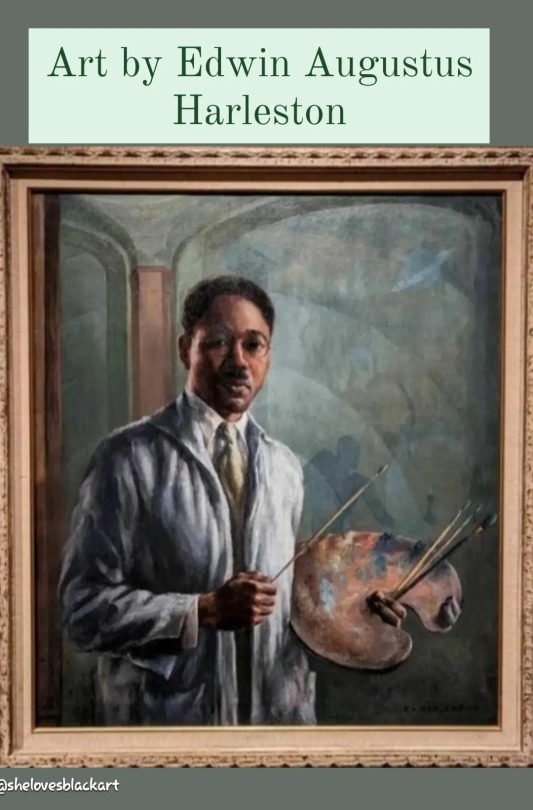

#Repost @shelovesblackart
——
Artist, Edwin Augustus Harleston (1882-1931) Portrait of Aaron Douglas (1930).
.
Douglas was a leading Harlem Renaissance artist and the founder of the art department at Fisk University in Nashville, TN
Harleston was born in Charleston, SC to a prosperous family. Harleston was once described by W. E. B. Du Bois as the “leading portrait painter of the race." Unfortunately he was never able to fully devote himself to his art. Following his college graduation from Atlanta University, in 1904 where he studied under Du Bois, Harleston enrolled at the prestigious School of the Museum of Fine Arts in Boston, foregoing his admission to Harvard from 1906-1912. Harleston was a also summer student at the Art Institute of Chicago.
Despite his promising start as a professional artist in Boston, Harleston was pressured by his father to return to Charleston in 1912 and assume responsibilities with the family funeral home. The tension between family obligations and artistic passion pervaded Harleston’s adult life.
Harleston met with modest success as a painter; racial prejudices and segregation derailed his career. In 1930, Aaron Douglas, invited Harleston to assist him in completing a mural commission at Fisk University in Nashville. Harleston readily accepted the younger painter’s offer and spent several months working on the project alongside him. The unfinished murals form a backdrop to Harleston’s 1930 portrait of Douglas.
Edwin Harleston died from pneumonia at the age of forty-nine in Charleston. Today, his works are represented in the collections of the Gibbes Museum of Art, Savannah College of Art and Design Museum of Art, and the California African American Museum
Source: The Johnson Collection, LLC
Image courtesy of @hamptonartlovers
1 note
·
View note